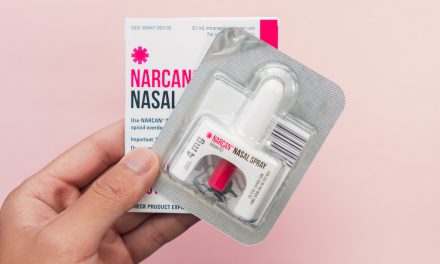“I literally would have rather died than have someone know I was seeking mental health treatment. Mental health treatment was for psychos and legitimately crazy people – not ‘normal’ kids and young adults like me.” For 44-year-old Brian Miller and many other white men in the rural Midwest, mental health stigmas and strict gender roles discourage attempts to seek help and contribute to high suicide rates. Nationally, males have a suicide rate 3.7 times higher than females and in Missouri, white suicide rates doubled that of other races.
According to Missouri Department of Mental Health (DMH), adult men are most at risk for suicide, with 380 adult men between the ages of 35-60 years old dying of suicide each year. While small-town stigmas and machismo stereotypes contribute to shame driving men away from asking for help, the armed forces also play a unique role. Veteran suicide rates are 1.5 times greater than non-veteran suicides and many former members point to the lack of support when returning to civilian life. Men feeling ashamed, isolated, and unsupported are more likely to turn to substances to cope and are at-risk for suicidal thoughts, ideations, and attempts. While the number of mental health providers in Missouri increased throughout 2020, resources are irrelevant if men don’t feel comfortable utilizing them.
Each June, Men’s Health Month highlights the unique health challenges men face and the changes necessary to improving men’s physical and mental health. Men’s Health Month underscores the need to not only help men now, but to better support boys raised in the future, which must include normalizing conversations around mental health. While rural attitudes surrounding mental health and treatment may vary, many men agree on one resource they wish they had sooner: another man to talk to who could understand.
Masculinity, Mental Health, and Men’s Confidence
As an adolescent in Omaha, Nebraska, poverty also played a role as money was tight and Miller didn’t want to further burden his family by requesting extra money for mental health care. When he did raise concerns about his anxiety, he was told he “didn’t have the balls to handle the situation.” This expectation of constant hypermasculinity is unfortunately the norm for many men, especially in rural areas with gendered family dynamics, and can push men away from seeking help in the future. In his small town growing up, any business was everyone’s business and staying quiet was necessary to avoid being labeled a freak.
Patrick Williams, a 34-year-old Kansas City, Missouri resident, was singled out for his differences as an adolescent while growing up in a rural town. “No matter how much I’d been through, I internalized the need to ignore how I felt if it wasn’t in line with stereotypical male behavior,” he said. “There were a lot of stigmas around the ideas of treating mental health, or that seeking help made you weak or less than someone else.” His ‘different’ behaviors as a youth have since been diagnosed as Combined ADHD (ADHD-c) for which he currently receives treatment, but also wishes he had the knowledge and tools sooner, rather than believe there was something wrong with him.
Both Miller and Williams turned to alcohol as an escape from their struggles and suicidal thoughts throughout the years, a common reality for many men. Mike Campbell, a 30-year-old service and brewing industry worker in central Texas, found that easy access to alcohol allowed him to use it to cope with negative thoughts. In a pro-drinking industry, he’s been told he’s a fun drunk among other compliments but has not been told as many positive things when sober. “Sometimes I feel like people like me better when I’m drunk,” he said. “It sets off alarms in my head when I think like this, because I have a goal of one day quitting drinking.”
All three of these men were diagnosed later in adulthood with various mental health disorders and challenges which were worsened by compounded feelings of shame, low self-worth, and substance use over the years. These factors can cloud a person’s mental judgement and overwhelm them with feelings that they are better off gone. When substances are present, the risk of overdose increases and the situation can quickly become fatal. One avenue to improving men’s mental health is recognizing the comorbidities between substance use and mental illness/suicidal thoughts, as well as addressing the pressures to fit a certain mold of masculinity.
Criticizing men for not being manly enough, showing improper emotions that need to be hidden, or implying that they are more likeable when exhibiting unhealthy behaviors chips away at one’s sense of self and their relation to their emotions. By teaching, raising, and encouraging men to freely explore their identities and emotions, we can encourage confidence and comfort in being vulnerable – both of which men have far too long been denied on a mass scale.
From Soldier to Civilian
For men returning home from the armed forces, a lack of transitional support can lead to isolation and difficulty re-establishing stability and a sense of belonging. “The first few years trying to come back into a civilian life were extremely hard for me,” said Richard Green, a 36-year-old southwest Iowan who served in the U.S. Navy in the early 2000s. “Going from the only structure and lifestyle I knew as an adult to the civilian world was far more difficult than I ever would have imagined.” Green’s struggles began in early childhood growing up with an alcoholic father and meth-addicted mother, forcing him to suffer severe neglect and abuse, while raising his younger siblings. The stigmas surrounding mental health and masculinity in his rural town created a “just get over it” mentality which isolated him from those who may have otherwise been an outlet.
Desperate to escape his small town and familial abuse, he joined the navy following high school and didn’t experience any setbacks during his service until he returned home. The lack of support re-entering the world caused him to struggle to find work and support himself as well as find stability without the structure he’d grown accustomed to. He also had a hard time creating bonds with people outside of the military, worsening his isolation and driving him to seek solace in alcohol. “I think I drank to forget everything that brought me down,” he said. “It’s all I really felt I had in my life at the time. I wish I had someone that would listen to and understand what I was going through.”
According to Andrew Carter, a 24-year-old Kansas City, Missouri resident who re-entered civilian life during the COVID-19 pandemic, these transitional issues are still present. As a teenager, Carter was forced into homelessness and has since struggled with stability, especially returning home amid lockdowns. “The world changed so much in just a year and they didn’t know how to tell us – we were just so isolated,” he said. “Nine months out of 2020 I had no contact with anyone. It blew me away when I started learning what everyone had been up to.”
Though Carter said the military has come a long way to implement procedures for peer support, including buddy systems to check in on one another, the procedures to properly transition someone from battle ready to civilian life simply aren’t there. He frequently sees an overwhelming population of homeless service members, including peers of his, living on the streets of Kansas City. Carter worries about the consequences of putting people still in a “ready-to-kill” mentality and fresh out of violent locations onto the streets without emotional support and basic resources. Carrying trauma without the ability or safe space to process it can make one prone to emotional outbursts which grabs the attention of bystanders and potentially law enforcement. Homelessness is often criminalized and people who seem to be mentally unwell or using substances are often stigmatized rather than recognized as someone in need of care.
In men of all ages, Post-Traumatic Stress Disorder (PTSD) symptoms may be misdiagnosed as anger or hyperactivity issues if they can’t acknowledge or communicate that they’ve experienced trauma. Boys and men are so discouraged from exploring and understanding their emotions that pain is immediately repressed and trauma may go unacknowledged for quite some time. Violence witnessed in the military, abuse at any age, and homelessness, among other factors, can all cause trauma. As the trauma continues unrecognized, the surrounding memories, emotions, and triggers compound and even day-to-day occurrences can set off a painful memory and flurry of confusing and explosive reactions. Boys and men, including and especially those at high-risk of PTSD, need mental health treatment that seeks to answer “what happened to you” versus “what’s wrong with you” and deserve care, not criminalization.
Treatment Offers Answers
Any type of mental health challenge left untreated can ultimately compound into a larger issue. Getting a diagnosis not only provides a starting point for treatment options but also a community of people who can understand and relate. Therapy, whether in a group, facilitated by peers, or one-on-one with a counselor, offers a space to explore challenging emotions, memories, and questions about one’s identity. For Harry Lewis, a 21-year-old former missionary in Idaho, a diagnosis finally answered the question, why me?
When Lewis lost an uncle struggling with addiction to suicide, he realized he also felt an unescapable sadness within him. After high school he became a missionary and while he could easily accept that others were worthy and deserving of love, he couldn’t apply the same beliefs to himself. He tried to take his own life but did not succeed and was sent home early for treatment, leaving him feeling ashamed and weak as though he faked a crisis to get out of the mission. However, the subsequent years of therapy and psychiatric treatment, as well as official diagnoses of depression, anxiety, and ADHD, validated everything he felt up to this point. “After years of my life thinking that I was a freak or immature, I finally knew why I was like this,” he said. “I wasn’t weak, I wasn’t flawed, I just had some disorders.”
Kevin Clark, 32, is a genderqueer person (they/them) living in Massachusetts who was also given an ADHD diagnosis after they began school-provided therapy following an ER trip for overconsumption of marijuana in college. “Therapy probably saved my life – I had been living with a baseline, low-level suicidal urge for longer than I could remember,” they said. Equipped with a diagnosis, Clark has since found the TikTok app has a great community of people with ADHD educating and supporting others. Tools learned in therapy and the safe space to explore themselves also allowed Clark to explore their gender and sexuality and Lewis to address shame surrounding adolescent judgments regarding his bisexual orientation.
Men Need Other Men
Out of the seven people interviewed for this article, six have struggled with both substance abuse and suicidal thoughts throughout their lives. Four of the men interviewed have either attempted suicide or took steps with the intent to such as acquiring weapons or writing a note. Three reported they still are not seeking treatment – therapy, medicine, or otherwise – due to fear of what will arise emotionally, continued stigma from loved ones, or because they have not found someone with whom they feel comfortable. When asked, “what did you wish someone had said to you when you first realized you needed help?” the answers overwhelmingly indicated that what men are missing most is the support, comfort, and transparent vulnerability of other men.
Honest conversations about mental health and substance use normalize the topics and help form a community showing others they are not alone and support is available. Resources for those needing peer support, veteran support, mental health diagnoses and treatment, and more are listed below. “The longer you ignore what you’re going through, the worse you’ll feel,” said Williams, who has found comfort and success with weekly therapy since 2019. “You deserve to understand where your thoughts and emotions come from, as well as how to handle them when they feel uncontrollable.” This June, celebrate Men’s Health Month by joining the conversation on social media. Get information about the campaign and social media images to jump start the conversation.
Warning signs of suicide include thoughts of worthlessness, being trapped, feeling like a burden, and becoming withdrawn or isolated. If you are experiencing these thoughts or are suicidal, call the 24/7 National Suicide Prevention Lifeline at 800.273.8255 to receive judgment-free support and learn more about resources available to help. (*Names in this article have been changed.)
Peer support
Men’s support groups in Missouri (including therapy and telehealth)
Virtual chat rooms on a variety of mental health topics
Nationwide directory of peer support programs
Anxiety and Depression Association of America peer-to-peer support group
Mental Health Education and support
Attention Deficit Disorder Association
Children and Adults with Attention Deficit/Hyperactivity Disorder
Depression and Bipolar Support Alliance
Emotions Anonymous (information about depression/bipolar disorder & information for friends and family)
Substance Use & Comorbidities
Dual Recovery Anonymous (they also offer an extensive separate website that focuses on co-occurring disorders)
Post-Traumatic Stress Disorder (PTSD) & Resources for Veterans
Gift from Within & Trauma Support Resources
Angel Wings for Veterans (for injured veterans’ ongoing healing process)
Cause USA (help for those wounded in military service)
National Center for PTSD offers “Understanding PTSD: A Guide for Family and Friends”
Self-harm & Suicide Prevention
S.A.F.E. Alternatives (information and resources for help with self-injury)
Suicide Prevention Resource Center
Yellow Ribbon offers information and resources about suicide prevention for teens, parents, and others. Has chapters in many states and some other countries as well as support resources for those who have lost a loved one to suicide.
Hotlines
Child-Help USA at 1-800-422-4453 (1-800-4-A-Child) assists both child and adult survivors of abuse, including sexual abuse. The hotline, staffed by mental health professionals, also provides treatment referrals.
Boys Town at 1-800-448-3000 is a crisis, resource, and referral line that assists both teens and parents.
National Suicide Prevention Lifeline at 1-800-273-TALK (1-800-273-8255) connects you with a 24-hour crisis center.
SAMHSA’s Treatment Locator at 1-800-662-4357 provides you with information about local mental health services








